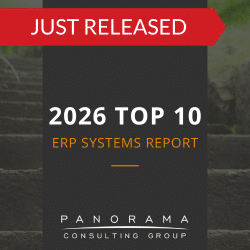Key Takeaways
- SCM user adoption increases significantly when companies address common reasons behind SCM system resistance, such as insufficient real-world training.
- Supply chain system adoption often stalls when users encounter real-world edge cases that initial system design overlooks.
- Training tailored to actual business contexts, seasonal variations, and operational constraints reduces SCM system resistance.
Supply chain automation alone does little without user trust. We’ve seen world-class supply chain strategies undermined by underused systems, while less sophisticated tools drive strong results because the users actually trust them.
Maximizing supply chain management (SCM) user adoption is critical, but this is only possible with clear roles, practical training, and visibility into real-world workflows.
Today, we’re exploring how companies can improve their supply chain operations by increasing SCM user engagement and confidence.
Change Management Case Study
The client recognized their need for more comprehensive change management, so they asked us to fill in the gaps. We developed a robust communication plan to supplement the vendor’s communication approach.
How to Address SCM System Resistance
The longer resistance lingers beneath the surface, the more it erodes inventory visibility and confidence in the system’s data. That’s why our SCM consultants always tell clients to surface resistance early by conducting user-group forums and role-specific surveys during design and testing.
Below are five best practices to address resistance and increase supply chain system adoption.
1. Rehearse Real Life
Too many SCM implementations rely on clean demo data and ideal workflows. However, adoption happens in the edge cases.
Before go-live, schedule scenario-based walkthroughs using real inventory, customer, and supplier data. Bring in the people who understand the mess—floor leads, procurement coordinators, freight planners—and let them test the system against real scenarios.
This stress-testing uncovers configuration gaps while building user trust. When users see their real-world challenges reflected in the solution, they start viewing the system as an asset rather than a constraint.
2. Align User Behavior With Operational Ownership
One of the fastest ways to kill SCM user adoption is unclear accountability. Many supply chain teams can’t answer basic questions like:
- Who owns inventory accuracy?
- Who’s responsible for updating lead times?
- What happens when a planned shipment misses its SLA?
If roles aren’t clearly defined—and the SCM system doesn’t reinforce them—users will default to their old tools and habits.
For example, an industrial manufacturer might implement a manufacturing ERP system with a native SCM module. Clearly defining production scheduling ownership and exception-handling escalation paths would build accountability and minimize workarounds.
3. Treat Training as a Change Leadership Function
Slide decks and click-through demos won’t overcome SCM system resistance. What users need is context: Why is this changing, and how does it affect my job?
Effective SCM training should:
- Map new system steps directly to old workflows
- Explain the business logic behind new controls and validations
- Include role-specific scenarios, not generic features
Vendor training materials are often templated and detached from your business reality. Our SCM consultants always tell clients to build a training plan customized to specific roles and data ownership realities.
4. Measure Adoption With the Same Rigor as Financials
Track metrics like:
- Frequency of system use by role
- Use of workarounds (e.g., Excel)
- Time to complete key workflows (e.g., order-to-ship, PO approvals)
- Accuracy and timeliness of system-entered data
Then pair those metrics with manager-level reviews. If adoption is lagging, managers should inspect the process, the configuration, and the change support.
For example, if change management wasn’t embedded into the project plan from the beginning, then this may be the reason for low system adoption. The best ERP consultants prioritize change management by helping companies develop a communication plan and training strategy early in the project.
5. Name and Empower Super Users
The most successful supply chain management system rollouts we’ve seen all had one thing in common: a visible network of super users.
These are individuals across the organization who understand the system and the business. They translate technical capability into operational fluency.
Super users can:
- Answer in-the-moment questions
- Surface configuration gaps quickly
- Act as liaisons between business and IT
However, this only works if the role is formalized, visible, and supported by leadership. Too often, these responsibilities are unofficial and unsustainable. We recommend building it into role expectations and recognizing individual impact.
Learn More About SCM User Adoption
Supply chain system adoption is the key to unlocking your investment’s value—from streamlined inventory management to enhanced customer experience.
If you’re wondering why your system isn’t delivering the ROI you expected, start by asking: Are we making it usable? Are we making it valuable to the people who run the business every day?
If the answer is unclear, contact our organizational change management consultants for a free consultation.














